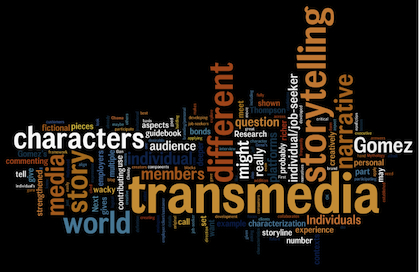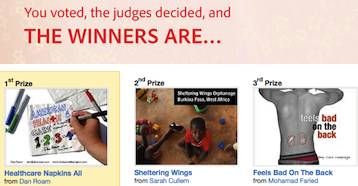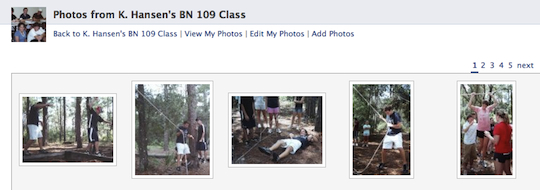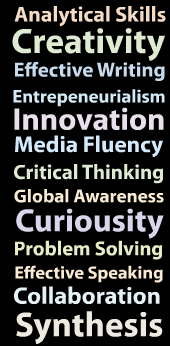 What I’m about to propose here may be wacky, but it’s also timely, given personal-branding guru Dan Schawbel’s blog post yesterday asking readers to predict when traditional resumes will die.
What I’m about to propose here may be wacky, but it’s also timely, given personal-branding guru Dan Schawbel’s blog post yesterday asking readers to predict when traditional resumes will die.
My proposal: Individuals and job-seekers can use transmedia storytelling to tell their personal stories and brand themselves. It’s wacky primarily because transmedia storytelling is usually used for fictional narratives about multiple characters.
I’ve already raised the question of whether individuals can use transmedia storytelling, pointing to the most frequently cited nonfiction example, the Obama presidency.
An interview with Jeff Gomez, producer and Hollywood creative executive, about transmedia storytelling by Vince Thompson on Smartplanet provides a good framework for what I’m talking about.
First, Thompson notes that “Research has shown that when consumers meet their characters in different media contexts their bonds are strengthened.” So what if we plugged a few different but analogous words into that statement: Research has shown that when employers meet candidates in different media contexts their bonds are strengthened. I don’t know if that’s true, but it’s logical.
Next, Gomez’s characterization of how transmedia storytelling works (he’s applying the characterization to movies, typical targets of transmedia storytelling):
“[Transmedia storytelling] would give us different pieces of the narrative on different media platforms, so that we can see the movie and then explore different aspects of the characters and the world in other media. Taken as a whole, it’s a richer, deeper experience that gives us more of what we really want.
OK, so maybe transmedia storytelling, in which an individual or job-seeker gave different pieces of his or her personal/career narrative on different media platforms would give employers (or perhaps customers, clients) a richer, deeper experience that gives us more of what they really want.
I fully admit that not all aspects of fictional transmedia storytelling may work for individuals. For example, Gomez says: “[A]ll you really need as a basis for this form of expression is a story set in a world where the visionary or creators have developed a number of characters and a setting with a past, present and future.” In the individual version, you’d probably just focus on one character, the individual/job-seeker. On the other hand, other characters might be bosses, subordinates, and team members who could be part of a story of how well the protagonist collaborates with others.
Questions Gomez poses about developing the transmedia story could easily apply to an individual/job-seeker:
- What are the building blocks of this narrative?
- What makes the characters and the world unique?
- What is this story trying to tell the world?
In the case of the third question, substitute “employer/client/customer” for “world.”
The next step Gomez details would be a great addition to personal branding/personal story development: “Once we understand [the answers to the three question above], we can set about creating a guidebook to the narrative that we call a Mythology.” This guidebook could provide the individual with direction “for how to best weave the story across multiple media platforms.”
The other critical aspect of transmedia storytelling is participation by audience members. Gomez says:
… transmedia narrative by definition has a number of what we call “invitational” components, where audience members are welcomed to participate by commenting on the narrative, by playing established or original characters, or even by contributing creatively to the world and the storyline.
For the individual, having audience members “play” him or her probably would not be desirable, but participating and commenting on the individual’s story would be, and “contributing creatively to the world and the storyline” might be.
Tomorrow in Part 2: What all this might look like for the individual/job-seeker, including how it might align with Christy Dena’s reportage on Gomez’s 8 characteristics of a transmedia production.









